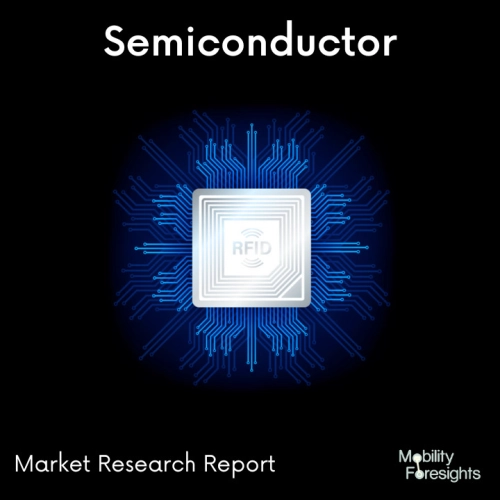
- Get in Touch with Us

Last Updated: Apr 25, 2025 | Study Period: 2024-2030
A Wet Etching Machine is a tool used in the process of wet etching. Wet etching is a method of removing material from a substrate (such as a printed circuit board, semiconductor, or glass) by immersing the substrate in a chemical solution. The machine can be used to etch copper, brass, aluminum, and other materials. It is also used in the production of printed circuit boards.
The Wet Etching Machine typically consists of a tank, a pump, and a nozzle. The tank is filled with a chemical solution that is used to etch the substrate. The pump is used to move the chemical solution through the tank and out of the nozzle. The nozzle is used to direct the chemical solution to the substrate.
The process of wet etching involves submerging the substrate in the chemical solution and agitating the solution to ensure that all the substrate is exposed to the etchant. Depending on the type of etchant used, the etching process can take anywhere from a few minutes to several hours.
The Wet Etching Machine is an efficient and cost-effective way to etch substrates. It is also a safe and reliable process. The chemicals used in the process are non-toxic and do not produce hazardous vapors. Furthermore, the process is fast and can produce detailed etchings. As a result, the Wet Etching Machine is widely used in the electronics industry.

The Global Wet Etching Machine Market accounted for $XX Billion in 2023 and is anticipated to reach $XX Billion by 2030, registering a CAGR of XX% from 2024 to 2030.
NexGen Single-Wafer Wet Etch Equipment was introduced to North America by Entrepix.With the introduction of the internet of things and the growing number of new markets for integrated circuits (ICs), the semiconductor market is still changing.
This implies that suppliers need to regularly review their portfolios to make sure they can satisfy client demands. As a result of the partnership with NexGen, they can provide customers with crucial wet etch and clean capabilities to meet their processing needs.
A variety of customer wet etch and wet clean requirements can be met by the very versatile enabling technologies offered by the MG series single-wafer wet etcher, a singular, tested platform.
Customers may now conduct wafer wet etch processing demo testing, prototyping runs, and small volume production all within North America when combined with Entrepix's current in-house wafer foundry capabilities.
Customers now have production flexibility that may be tailored to meet the needs of their specific applications.As per the terms of the deal, Entrepix will offer clients in North America marketing, sales, after-sales support, field assistance, and process application capabilities.
In wet etching, undesired portions are removed chemically by contacting the material with an acidic or basic chemical liquid. The etchant, which is exceedingly cost-effective due to its low cost, is the acidic or basic chemical liquid used in this operation.
Wet etching is also more productive than other methods since it allows for the simultaneous treatment of many foil leaves.For wet etching, the etching apparatus is usually inexpensive and has a straightforward design. It also operates in a straightforward manner. This leads them to conclude that the method is better both in terms of original cost and ongoing costs.
Wet etching also offers the benefit of causing less damage to the etched object, increasing the practical applications for which it can be used.The usual assumption is that corrosion progresses uniformly in all directions since the worked-up material is submerged in a solution during the wet etching process.
When it happens, the material will be so worn down that it will gouge under the resist that has been applied as masking in the regions that you don't want it to corrode; this type of etching is called isotropic etching.
| Sl no | Topic |
| 1 | Market Segmentation |
| 2 | Scope of the report |
| 3 | Abbreviations |
| 4 | Research Methodology |
| 5 | Executive Summary |
| 6 | Introduction |
| 7 | Insights from Industry stakeholders |
| 8 | Cost breakdown of Product by sub-components and average profit margin |
| 9 | Disruptive innovation in the Industry |
| 10 | Technology trends in the Industry |
| 11 | Consumer trends in the industry |
| 12 | Recent Production Milestones |
| 13 | Component Manufacturing in US, EU and China |
| 14 | COVID-19 impact on overall market |
| 15 | COVID-19 impact on Production of components |
| 16 | COVID-19 impact on Point of sale |
| 17 | Market Segmentation, Dynamics and Forecast by Geography, 2024-2030 |
| 18 | Market Segmentation, Dynamics and Forecast by Product Type, 2024-2030 |
| 19 | Market Segmentation, Dynamics and Forecast by Application, 2024-2030 |
| 20 | Market Segmentation, Dynamics and Forecast by End use, 2024-2030 |
| 21 | Product installation rate by OEM, 2023 |
| 22 | Incline/Decline in Average B-2-B selling price in past 5 years |
| 23 | Competition from substitute products |
| 24 | Gross margin and average profitability of suppliers |
| 25 | New product development in past 12 months |
| 26 | M&A in past 12 months |
| 27 | Growth strategy of leading players |
| 28 | Market share of vendors, 2023 |
| 29 | Company Profiles |
| 30 | Unmet needs and opportunity for new suppliers |
| 31 | Conclusion |
| 32 | Appendix |